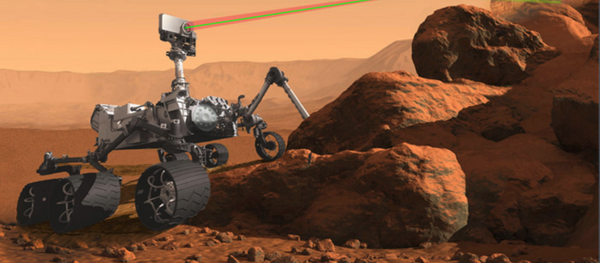The photos were taken near the base of 18,000-foot Mount Sharp, one of Mars's tallest summits. Curiosity has been exploring the slopes of the enormous mountain for over two years, sending photos back to NASA the entire time. Strong winds in the region keep the rocks free of the red dust that covers most of Mars, revealing their true color, which, in this case, is purple.
NASA stated that the purple coloration is caused by the presence of hematite, an iron oxide commonly used on Earth as a pigment, or jewelry component. Scientists studying Mars find the presence of hematite interesting, as it is typically formed in aqueous environment, suggesting that water may have once been present in the area. Dr. Joy Crisp, with NASA's Mars Exploration Rover Project, wrote that "where water was, life may have had a chance to thrive as well… knowing just how the hematite on Mars was formed will help us characterize the past environment and determine whether that environment was favorable for life."
One of the reasons for NASA's interest in Mount Sharp is that the Curiosity rover has previously discovered evidence suggesting that the area may have been favorable to microbial life many thousands of years ago. In March 2013, NASA announced that Curiosity had discovered the chemical ingredients for life a few inches beneath Mars's surface, including hydrogen, oxygen, nitrogen, carbon, sulfur, and phosphorus. Curiosity also found traces of clay, suggesting a body of water previously existed in that spot. The discovery was made in the Gale crater, of which Mount Sharp is the center.
Another reason for NASA's interest in the area is to learn how Mount Sharp formed. Curiosity lead scientist John Grotzinger said that "there's nothing like [Mount Sharp] on Earth… we don't really know what's going on there." The Gale crater was formed by a major asteroid impact, but mountains typically do not form in craters, and researchers believe that Mount Sharp could predate the crater. The Curiosity team hopes that rover data will help in uncovering the mountain's mysteries.
It is also hoped that further information about the ancient mountain could provide an answer for the cause of the Great Desiccation Event. While most astronomers are confident that Mars was once a water-covered world similar to Earth, they are not certain what prompted such large quantities of water to vanish, leaving Mars dusty and devoid of life.



